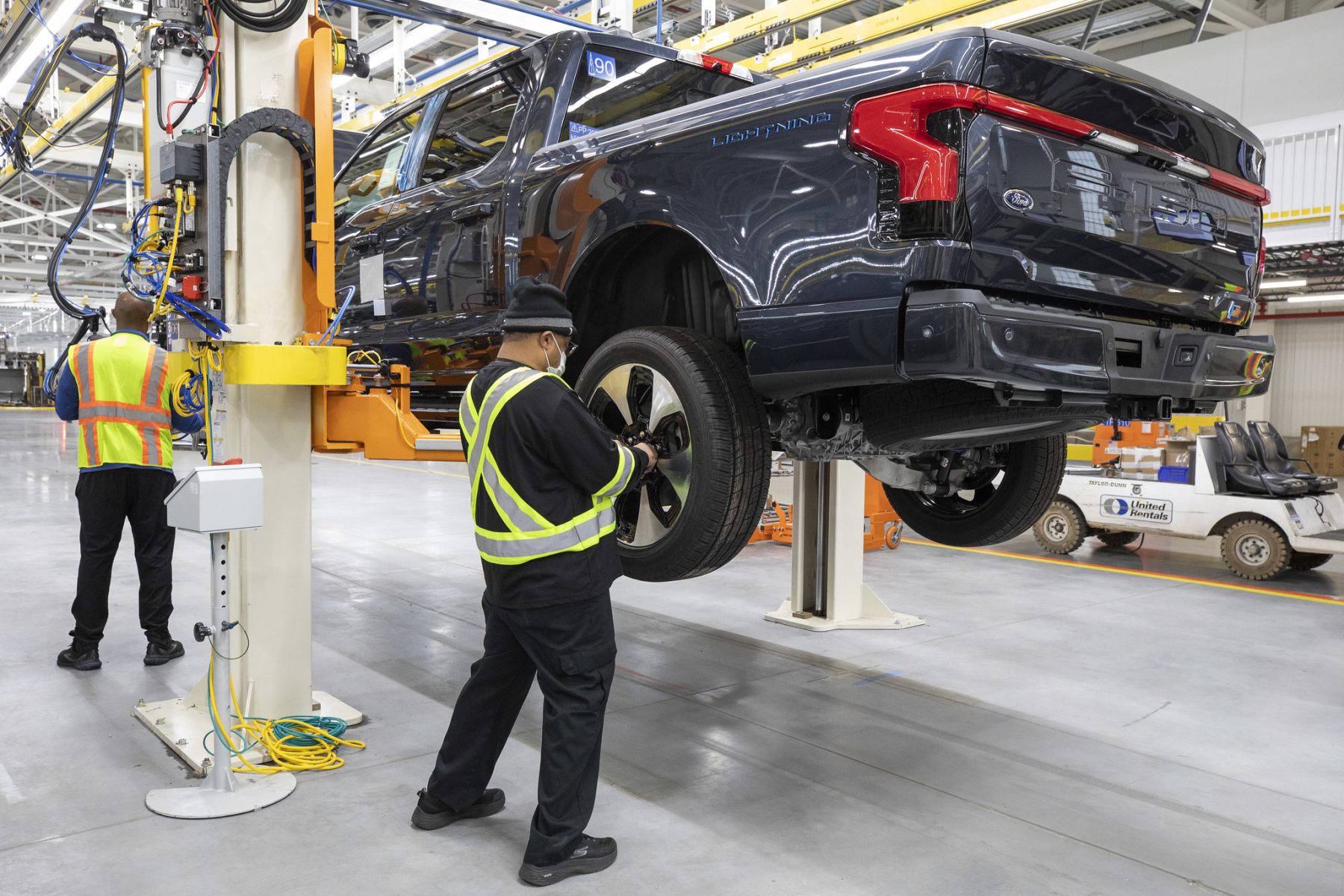Autoworkers have endured decades of eroding wages and worsening working conditions as the Big Three auto companies—General Motors, Ford, and Stellantis—have shored up their profits by taking it out of the hides of the workers. But these workers are saying “enough is enough!” As a result, 150,000 union auto workers are gearing up for strike action in the US, as their contract with these companies approaches a September 14 expiration date.
[Originally published at socialistrevolution.org]
When explaining his reaction to Stellantis’s auto contract proposal to members in an August all-member video meeting, newly elected United Auto Workers President, Shawn Fain, dumped his copy straight into a trash can. “We haven’t kept up with inflation in the last 20 years as they’ve closed 65 plants,” Fain said. “Wages have regressed in the last 16 years, went backwards $10 an hour; meanwhile, CEO pay went up 40% in the last four years alone.”
Fain and his reform slate won the first-ever direct union leadership election by UAW members earlier this year after corruption scandals forced the resignations of two previous UAW presidents.
One of the bosses’ main tactics in this long-term assault on UAW members has been the introduction of tiered wage systems that significantly lowered compensation for new hires and made job security precarious. “We’re set out to eliminate all these tiers of workers and all these different pay scales,” Fain pledged.
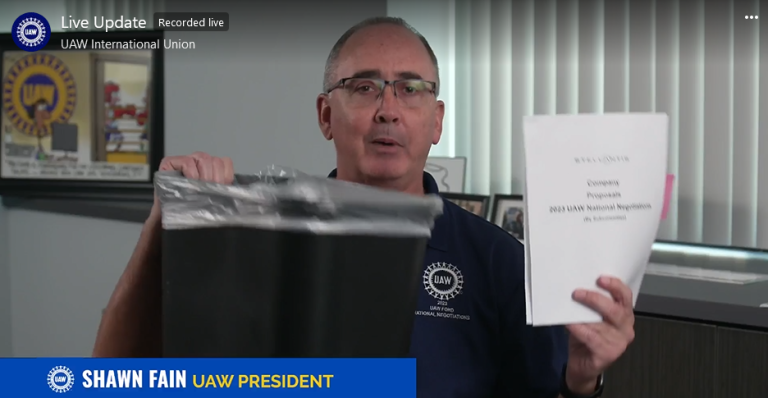 UAW President Shawn Fain dumped his copy of Stellantis’s contract proposal straight into a trash can / Image: UAW, Facebook
UAW President Shawn Fain dumped his copy of Stellantis’s contract proposal straight into a trash can / Image: UAW, Facebook
Citing a need to gain competitiveness with companies employing lower-wage workers, the auto companies have extorted an endless series of concession contracts since the mid-1970s collapse of the postwar capitalist boom economy. With the threat of plant closures and lost jobs hanging over their heads, and in the absence of a fighting leadership at the top, workers conceded significant givebacks over the years. Since the 2008 Great Recession, however, it has become clear that patience and grudging acceptance on the assembly line have given way to more militant moods.
“We’ve just got to remember our roots,” Fain said, harkening back to the founding days of the UAW to inspire autoworkers in the kind of fight that will be necessary to turn back those decades of concessions—and he’s not wrong on that score.
Organizing autoworkers in the 1930s was accomplished through hard struggle and much sacrifice on the part of the workers. Those efforts were punctuated by pitched defensive battles against attacks by company thugs and cops, and included peaceful plant occupations by millions of workers in the sit-down strikes of 1936–37 that cemented the power of the auto workers’ union.
It should also be noted that it was communist and socialist workers who played the key roles in leading the workers to victory in the 1930s. They knew that for workers to defeat the auto giants and their wealthy shareholders, a clear vision that the interests of the workers and the owners were completely opposed to each other was required.
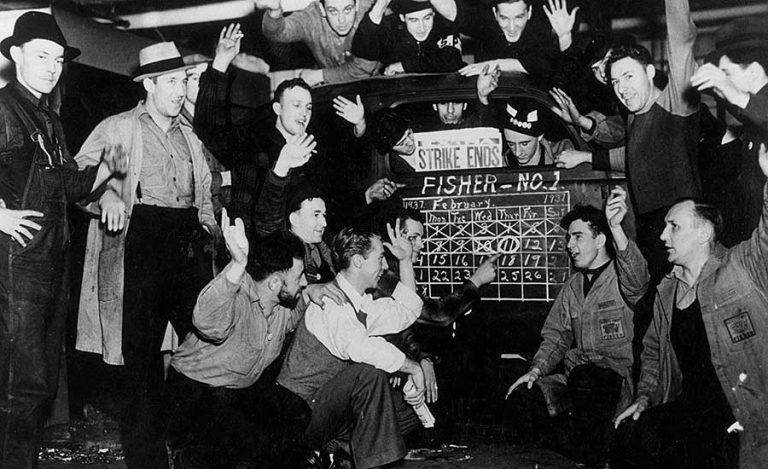 Organizing autoworkers in the 1930s was accomplished through hard struggle and much sacrifice on the part of the workers / Image: UAW, public domain
Organizing autoworkers in the 1930s was accomplished through hard struggle and much sacrifice on the part of the workers / Image: UAW, public domain
When they are forced into struggle by the intransigence of the bosses, workers can win on the basis of maximum unity and by appealing to the wider working class and labor movement. Striking workers’ task is to shut down production and to achieve this, they must understand that the government, police, and courts are not neutral or “pro-worker,” but are ultimately on the side of the bosses.
As the game of contract chicken intensifies, the question posed to Shawn Fain and the new UAW leadership is this: Are you ready to go all the way in this battle? If they are willing, we can be sure the rank and file will respond enthusiastically. And a class-struggle victory for the auto workers would unleash an even broader wave of strikes than we have seen in recent years. But there is no guarantee the leadership will go that route.
A test for the new UAW leadership
In addition to the Big Three, there are other auto companies with production and distribution facilities in the US. All together, the auto industry represents 3% of the country’s nearly $26 trillion GDP.
The UAW leadership is, therefore, facing a determined enemy. In the post-World War II years, the contracts of the UAW set the pace for workers throughout the US. This was also true in the late 1970s and 1980s. The givebacks granted by the UAW at that time set a tone of retreat for the labor movement. The entire American ruling class stands behind the auto bosses. A strike by workers against all three companies, especially a long one, which cannot be ruled out, would impact the economy as a whole.
The “Big Three” will blame the union for the economic dislocation, claiming that competition from non-union companies restricts what they can give to the union. New technology, such as electric cars and continued automation in the factories, threatens existing jobs.
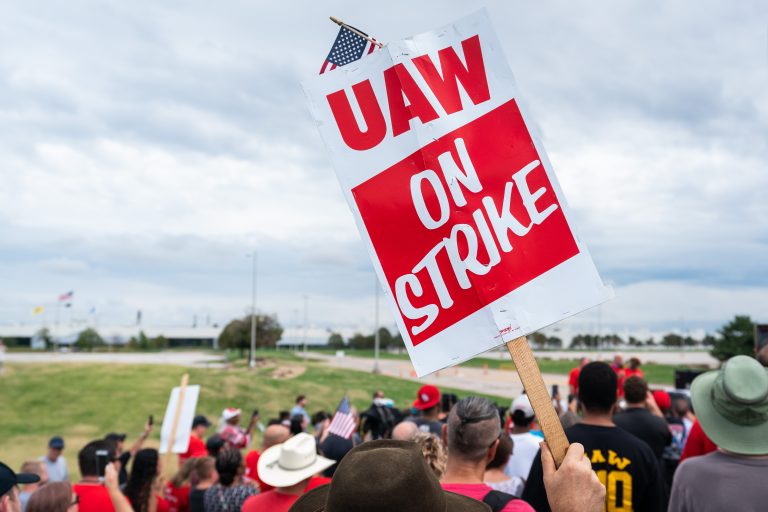 A strike against all three companies, especially a long one, would impact the whole economy / Image: Adam Schultz, Flickr
A strike against all three companies, especially a long one, would impact the whole economy / Image: Adam Schultz, Flickr
If the UAW leadership really wants to break with the givebacks of the past, they must adopt the perspective of the communists and socialists of the 1930s. First, they have to start a national campaign explaining that the battle for new contracts is not just about the UAW members. It is a battle to win a better life for the entire American working class. The auto workers need the help of the rest of the labor movement—and their victory will help all workers. Likewise, a defeat would weaken the entire working class.
The contracts must not only eliminate tiers and provide pensions, but must protect jobs. Any automation or technological advances that lead to job elimination must be addressed through a combination of paid retraining and by reducing the work week for all workers, without any reduction in weekly pay—not one layoff! When the auto bosses squawk and say this is impossible, the UAW leaders must remind everyone that all the wealth of the auto industry comes from the labor of the workers, not the bankers and executives.
To build solidarity and momentum, the UAW leadership should launch a mass organizing campaign of all unorganized workers in the auto and auto parts industry. They should explain that if they join the union, the full force of the union will be used to ensure union recognition and a contract that is at least as good as the Big Three contracts.
In addition, the UAW should link up with the Writers Guild, SAG-AFTRA, workers at Amazon, Starbucks, and elsewhere, who are battling for union recognition and contracts. The UAW can help set up committees of workers that can coordinate a united response and strategy to win. If this were done in a serious way—and the UAW is in a perfect position to take the lead on this—the American capitalist class would be forced to give in. Faced with a well-organized united front of the working class, they would be the ones bending over backwards to give concessions.
The failure of the recent leadership of the UAW was caused by the fact that they restricted all of their decisions to the limits of the declining American capitalist system. The new leaders of the UAW must break from that method. They must return to the class-struggle methods of the 1930s. Those struggles forged bonds of camaraderie among auto workers that made them unbeatable for decades. This is the sort of broad-based, militant effort that will be needed to rebuild a fighting labor movement in the years to come.
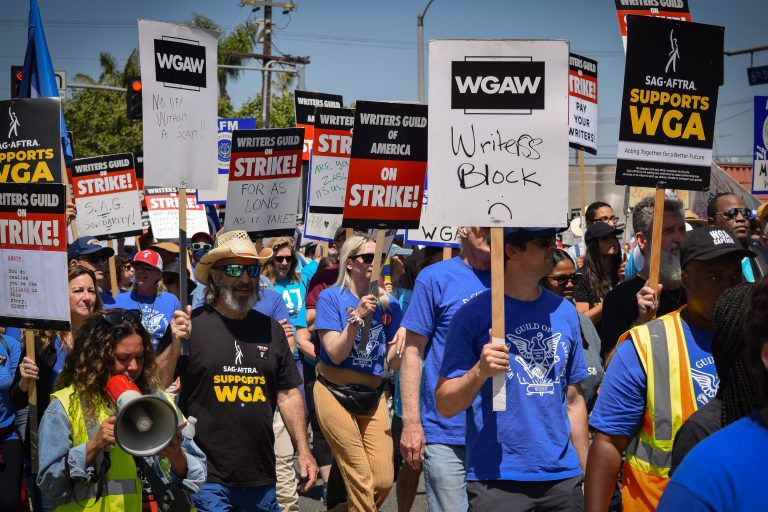 The UAW should link up with the Writers Guild, SAG-AFTRA, workers at Amazon, Starbucks, and elsewhere, who are battling for union recognition and contracts / Image: UFCW 770, Flickr
The UAW should link up with the Writers Guild, SAG-AFTRA, workers at Amazon, Starbucks, and elsewhere, who are battling for union recognition and contracts / Image: UFCW 770, Flickr
We call on all UAW workers who want to make this happen to join with the communists of the IMT. Together we can not only fight the bosses—we can win!
For those preparing to intervene on the picket lines if a strike is called, here is a summary of key demands being raised by the UAW leadership:
- Eliminate tiers
Currently, automakers have a tiered wage system. Workers in the first tier earn about $28 per hour, and those hired after 2007 are in the second tier and earn about $16 to $19 per hour. - Wage increases
The UAW is demanding double-digit pay raises. - Restore COLA
The UAW is demanding that Cost of Living Adjustments (COLA) be restored. - Defined benefit pension for all workers
Since new and recent hires are not on the traditional pension plan. - Re-establish retiree medical benefits
- The right to strike over plant closures
- Working family protection program
- Make temporary workers permanent
- More paid time off
- Increase retiree pay

